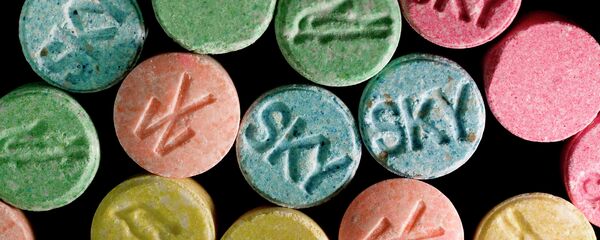A new study has found autistic girls and boys have more masculine faces compared with neurotypical control children, validating the Extreme Male Brain theory of autism.
Autistic boys and girls found to have “hypermasculinised” faces – supporting the Extreme Male Brain theory https://t.co/IzstrnO51d pic.twitter.com/23kVYqB9mA
— BPS Research Digest (@ResearchDigest) September 14, 2017
According to the Extreme Male Brain theory of autism, there are certain cognitive and behavioural characteristics that manifest more frequently in men than women, such as a bias for systematic rather than empathic thinking. Autism can be seen as an extreme version of that typical male profile, the theory proposes, possibly caused by prenatal exposure to higher than usual amounts of testosterone in the womb.
A similar observation is high concentrations of prenatal testosterone lead to the development of "hyper masculine" facial features — it follows if the Extreme Male Brain theory of autism is accurate, autistic people will have "hypermasculine" faces.
Past research into the hypothesis has produced mixed results — women with sub-clinical autistic traits or a diagnosis of autism have been found to have more masculine than average faces, but studies with autistic men sometimes found no difference from controls, or that autistic men tend to have androgynous rather than hyper masculine features.
3D Facial Mapping
For their paper, the research team, led by Diana Tan at the University of Western Australia, deliberately sought to test pre-pubescent autistic and neurotypical children, thus removing the possibility of hormonal changes during puberty concealing or reversing any facial signs of prenatal exposure to high testosterone levels.
Tan and colleagues also employed a new 3D facial mapping process, tested on 48 neurotypical boys and 53 neurotypical girls, to provide a highly accurate and objective measure of facial features that most typify a child's face, whether male or female. Using these features, the researchers' algorithm correctly categorised the sex of children's faces with around 98 percent accuracy.
Next, the researchers deployed the 3D facial mapping algorithm to score the facial features of 54 Caucasian autistic boys, 20 Caucasian autistic girls and age-matched neurotypical Caucasian boys and girls. This demonstrated autistic boys and girls had more masculine than usual faces — to use the researchers' jargon, their faces were hypermasculinized.
Moreover, when the researchers compared the autistic children and control children's faces on the six facial features — mostly related to the positioning of the nose and upper lip — that most strongly distinguished neurotypcial boys' faces from girls' faces, autistic children of both sexes were found to have a more masculine score than controls on five of these features.
Finally, among the autistic boys and girls, the more masculinized their faces, the more social and communication difficulties they tended to have, as scored in their diagnostic test for autism.
Shortcomings
The sample sizes for the study were relatively small, but perhaps its biggest weakness is it makes a syllogistic leap — high prenatal testosterone levels are known to cause faces to appear more masculine, autistic children have more masculine than average faces (as shown by the new results), therefore high prenatal testosterone levels contribute to autism, in line with Extreme Male Brain theory.
"Further investigation that tracks longitudinal links between early testosterone exposure, postnatal facial morphology and autism phenotype will provide more direct tests of the hypothesised relationships," the authors wrote.
The Extreme Male Brain theory has inspired important research into the causes of autism, but it has also proven controversial in some quarters.
For instance, a 2016 brain imaging study found when compared with male neurotypical controls, autistic boys and men had resting connectivity patterns resembling what's more typically seen in women, while autistic girls and women showed a more masculine neurological profile, lending support to the notion autistic spectrum disorder constitute a disorder of sexual differentiation or androgeny rather than a disorder characterized by masculinization in both genders.






